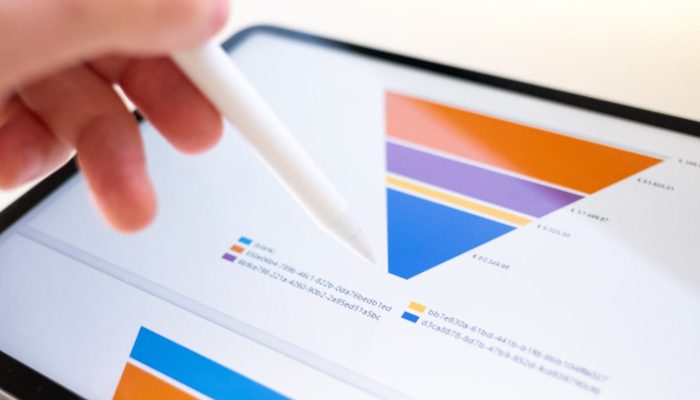The media industry is constantly evolving of course, and in 2023 we saw significant growth in several key areas, but technology was the common thread tying them all together. We anticipate that in 2024 we will see even more progression in these areas and we will be introduced to a plethora of new tech-enabled solutions helping agencies and advertisers alike to navigate through an ever changing technology centric world.
AI expansion
Without a doubt one of the biggest trends that we will see in 2024 is the expansion of AI across all media. In 2023, three in ten UK internet users aged 16+ said they used a generative artificial intelligence tool (Ofcom: Online Nation 2023) but this is likely to increase considerably as this nascent technology becomes more mainstream in our everyday lives.
Within marketing one of the lowest-hanging fruits for AI to add value is content creation: assisting with the production of creative assets and web content, as well as increasing the opportunities for personalisation of content and advertising for users. We have already seen how AI has transformed the search landscape in 2023 with the adoption of Microsoft’s Chat GPT and this will proliferate through 2024, providing an increasingly personalised and enhanced experience for users.
Another area where we are seeing growth is AI’s potential to deliver audience insights and predict behaviour, enabling hyper-personalisation by delivering tailored content, recommendations, and experiences to individual users. LinkedIn’s predictive audiences are a great example of this and we expect to see many other large media organisations adopt similar strategies in 2024.
Greater creativity and a move towards format-first
As technology advances and AI evolves, the demands for creativity in media will also grow. Creativity will become a defining factor in standing out for advertisers and innovative and compelling storytelling will be crucial to captivate audiences.
Building format-first creative will become the norm as advertisers start to understand the nuances in how audiences engage and interact with different media channels. For example, advertisers are quickly recognising the need to create engaging and captivating short-form video content with the rise in channels such as YouTube shorts. It is now also widely acknowledged that different creative is also needed to fulfil different objectives, for example lower funnel-brand metrics such as consideration and intent need longer engagement and greater attention from the customer than upper-funnel metrics such as awareness.
Another particular area that we predict will grow exponentially in 2024 is augmented reality, as advancements in these technologies offer marketers unique opportunities to create immersive brand experiences. Advertisers are likely to leverage AR in various ways to enhance user engagement such as product visualisation, interactive advertising, in-store experiences and location-based AR ads.
The rise of attention metrics
With the acceleration of creative solutions and a shift towards format-first solutions, another area where we predict to see rapid growth is attention metrics as these gain importance in marketeers’ understanding of user behaviour and engagement. Regardless of the channel, the success of any creative campaign lies in effectively gaining the user’s attention, and attention metrics will help advertisers quantify this. Capturing the user’s attention is proven now to drive brand lift and generate higher recall across the funnel, so it is now often regarded as the holy grail of what advertisers want to achieve.
Attention metrics offer deeper insights than traditional metrics, making them increasingly valuable for advertisers to engage with their audience. Whilst advertisers often rely on goals or sales as the ultimate measurement for understanding the value of digital investment, measuring the ‘softer’ metrics has always been notoriously more difficult with an over reliance on measuring impressions, clicks, or views as the main indicator of performance. Whilst these help quantify the reach of the campaign, they offer little in the way of a qualitative understanding of performance: they are silent on how engaging or impactful an ad has been – or indeed if the user has actually engaged with it in any way. However with customer attention increasing in value and importance to advertisers, we are now seeing a rise in technology solutions to provide actual scientific attention measurement.
It is still an emerging area, but technology is advancing rapidly in line with demand. Techniques such as facial coding, eye tracking and emotion detection are all being investigated to help understand engagement and response. And once again, this is yet another area where AI will assist, with its capability to predict attention patterns and forecast response.
Whilst attention metrics are currently the exception not the rule when it comes to measurement, it is one of the most significant changes that we have seen in performance metrics of late. They offer a more comprehensive understanding of user engagement and behaviour, beyond clicks and views. With evolving technology and a deeper emphasis on understanding attention, we predict that the significance of attention metrics will further solidify in the measurement of marketing campaigns.
Sustainability
Alongside our own commitment to achieving Net Zero by 2030, we predict that in 2024 marketers and media companies alike will increase their focus on authenticity, sustainability and social responsibility.
The pressure for sustainability in media companies has been steadily increasing, and this will only ramp up further next year. Many organisations are already adopting eco-friendly production practices, such as renewable energy sources and employing sustainable materials, and more and more media companies are now pledging to become fully carbon neutral over the next few years.
We are likely to also see a rise in sustainable content, as businesses aim to raise awareness of environmental concerns and of their own conservation efforts.
Whilst the pace and extent of these efforts may vary, there is an overall momentum toward sustainability and in 2024 we predict that more companies are likely to continue to embrace sustainable practices as part of their commitment to environmental responsibility as well as meeting the expectations and demands of their customers.
The path towards a cookieless future
The cookieless future is not quite here yet but the transition to a cookieless internet has definitely begun. Major media companies such as Google have already been phasing out support for third-party cookies, aiming to enhance user privacy and security, and whilst cookies might not disappear completely, their role in tracking user behaviour will start to diminish.
This is again where we see AI play a part as it will without a doubt be leaned upon for an alternative solution. But the other area of focus is on first-party data, which will become increasingly valuable in order to reach potential customers. First party data enables businesses to understand their customers better, allowing them to personalise user experiences, recommend relevant content and tailor their marketing messages. First-party data can also be used to create more accurate and relevant audience segments, delivering more precise and personalised ads to those that have already engaged with their brands.
Overall as reliance on cookies diminishes, having robust first-party data ensures that businesses can continue to understand and engage with their audience effectively.






